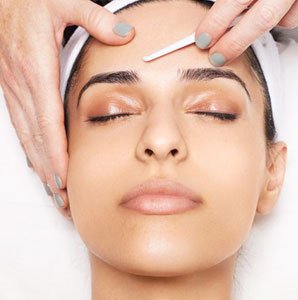

Dermaplaning: A Revitalizing Skin Experience
Service Overview: Dermaplaning is a transformative procedure aimed at deeply exfoliating the skin while effectively removing debris and unwanted vellus hair from your face. This dual action leaves your skin with a notably brighter and smoother texture. Moreover, it can potentially soften fine lines, wrinkles, and hyperpigmentation, contributing to a more even skin tone. Additionally, dermaplaning is recognized for its efficacy in addressing deep acne scars, although results can vary depending on individual skin types, tones, and medical hist
Concerns and Contraindications:
- fine facial hair
- dry or dull skin
- acne scars
- signs of aging like wrinkles and fine lines
- sun damage
- post-inflammatory hyperpigmentation.
However, certain conditions might warrant an alternative treatment, such as a chemical peel, instead of dermaplaning. These contraindications encompass current or recent Accutane use, undergoing cancer treatments, uncontrolled seizure disorders or diabetes, bleeding disorders, use of blood thinners (including aspirin), as well as specific skin conditions like eczema, seborrhea, dermatitis, or cold sores in the treatment area.
Treatment Schedule:
Dermaplaning treatments are typically recommended once a month, often initiating with a series of 4 sessions to achieve optimal results.
Procedure Highlights:
During your initial appointment, a comprehensive discussion about your history and treatment expectations will take place. The esthetician will begin by cleansing and preparing your skin before meticulously performing the service. This involves skillfully and precisely removing dead skin and debris by using a surgical scalpel at a 45-degree angle. The session concludes with the application of medical-grade products, and you’ll receive detailed post-care instructions.
Pre/Post-Care Guidelines:
To prepare for your treatment, discontinue the use of resurfacing and exfoliating products like retinol, vitamin C, skin lightening products, salicylic acid cleansers, etc., a week prior. Following the treatment, adhering to your skincare professional’s advice minimizes the risk of complications. Maintain cleanliness by sanitizing personal items like cell phones, makeup brushes, and changing pillowcases while avoiding certain activities, such as extensive exercise, sweating, or exposure to sun/tanning beds for the first 48 hours. Expect some redness and potential flaking in localized areas for 1-2 days; refrain from picking or rubbing your skin to prevent scarring or pigmentation changes. Post-treatment care includes using gentle, recommended products and daily sunscreen application.
Why Choose Our Clinic:
At our clinic, our esthetician Denae remains committed to continuous education, staying updated on the latest techniques in Western Canada. Denae’s dedication is reflected in her academic excellence, graduating with honors and holding a remarkable 98% average specifically in this treatment during her course.

